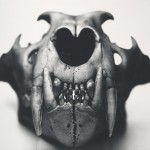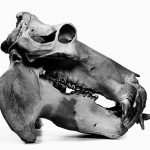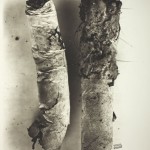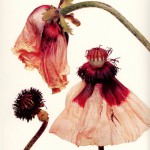OVERVIEW:
For this project we will be spend more time on studio lighting, specifically continuous lights through still life photography and objects as symbols to communicate a message. Historically, still life paintings and photographs were a way to examine light/shadow and improve technique by studying non-moving objects. Still lives were also incredibly heavy with metaphoric meanings, often revolving around ideas of morality and mortality.
For this project, your task is to 1) reflect on your cultural identity, 2) look for ways that you might represent or symbolize your relationship to your culture, then 3) bring in at least 3 items to arrange in a still life to photograph that will symbolize this relationship. Imagine that in 200 years, future KS haumāna are writing a report on ancient Hawaiians and find your photographs in the Kamehameha Schools Archives – what do you want these future students to know about Hawaiʻi in 2018? What do you think is important in your life and culture right now? What items could help you communicate this idea?
You will then shoot 1 roll of medium-format film (square format, so 12 pictures on a roll) in the studio, utilizing different lighting techniques that will be introduced in class. Keep in mind that our goal is to take as many dynamic, different pictures of that object as possible by manipulating lighting, composition, focus, as well as still life surroundings. As we learned with the Portrait Project, itʻs hard to choose pictures to print when they all look the same. Below is a video on still lives in photography as well as some insight into the symbolism of historical still lifes.
- Think of an object that symbolizes an idea – a black cat symbolizes bad luck, a doll represents innocence/childhood, baby teeth represent growing up, etc. Stay away from real obvious symbols, like a heart <3 means love…that’s boring and overdone. Try something else.
- Look for items with interesting shape or textures – curvy or bumpy seashells, beach wood, lace fabric, small rusty tools, weird fruit. Basically, stay away from flat, 2-dimensional things, as they aren’t quite as visually interesting.
- MAKE-UP AND SHOES ARE NOT ALLOWED. Dig deeper.
See the short video below in which photographers are given the same 3 objects with the challenge of NOT taking the same picture as anyone else. What choices does each photographer make when trying to make something new? List all the different ways they made their pictures unique.
WHAT’S DUE:
- 1 roll of medium format film
- 1 contact sheet
- 3 8″x10″ print
AT THE END OF THIS PROJECT, STUDENTS WILL BE ABLE TO:
- properly use continuous lights in the studio
- recognize symbolism and visual metaphors in photography
- analyze how changing compositions/lighting/focus can transform an object
- understand how to properly use a medium format camera
Projects #3 & #4 can be done in ANY order depending on the Studio Schedule, BUT one project must be turned in on Friday, March 6 with the next project due Wednesday, March 11.
GOAL: To create a still life that symbolizes or represents your relationship to your culture. Shoot a full medium-format roll of film, then print 3 pictures that best represents your cultural identity.
ROLE: Your are photographers providing material/artifacts to our school Archives to preserve for future generations. Your images are a snapshot of the social and cultural landscape of our school in 2019.
AUDIENCE: Future generations of Kamehameha Schools students and alumni. Perhaps one day your own children or grandchildren will find your pictures among the archived images of Pop Diamond.
SITUATION: Imagine that in 200 years, future KS haumāna are writing a report on ancient Hawaiians and find your photographs in the Kamehameha Schools Archives (by then 2019 will be considered almost ancient). Consider what you would want these future students to know about Hawaiʻi and Kamehameha in 2019? What do you think is important in your life and culture right now? What items could help you communicate this idea?
PRODUCT: 3 8″x10″ prints that best represent your cultural identity/relationship through still lives.
STANDARDS:
- Create: Students will independently use their learning to apply imagination and intellect to conceive, develop, and craft works of art to communicate ideas, experiences or cultural expressions.
- Respond: Students will independently use their learning to respond to and reflect on their work and the work of others in historical, cultural, or personal contexts.
EXAMPLES/INSPIRATION:
While these aren’t strictly still lives, here the Museum of Photographic Art looks at how 3 contemporary Chinese photographers explore culture through symbolism
– Hungry? Here’s a blog dedicated to food photography
– Artist Tatsuya Tanaka uses miniature figures to transform every day objects into playful scenes.
– Legendary photographer, Irving Penn was known for his mastery of studio lighting. He did several series of still lives, focusing on various subjects (animal skulls, flowers, even cigarette butts). While they seem like banal objects, the lighting and detail within his images transform these items into beautiful prints.
- Lion Skull by Irving Penn
- Hippopotamus Skull by Irving Penn
- Cigarette
- Flowers
– Garcia de Marina‘s body of work “Still Lifes” is a playful take on the subject.
– Remember to be aware of how lighting and perspectives can affect your overall composition and message. Photographer Suzanne Saroff manipulates both lighting and perspectives to distort what at first looks like a normal still life. See how placing glasses of water in front of her subject matter changes their composition in “Perspectives” or how shadows become part of her still life in “Shadows”.
-Photographer Matt Collishaw references traditional Dutch still life in his photographic series called “Last Meal on Death Row” where he photographs what death row inmates request for their last meal before their execution. How does the lighting and composition help communicate emotions in these images?
– Roger Fenton was an early still life photographer. Here’s a video following a museum curator recreating his photographic process and how he may have set up his arrangements




